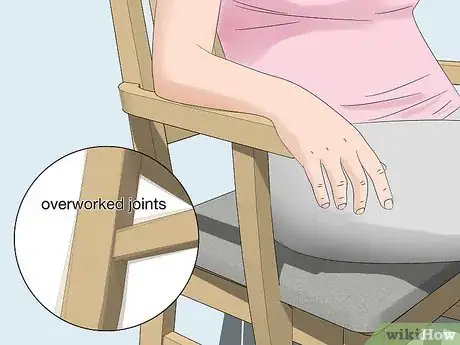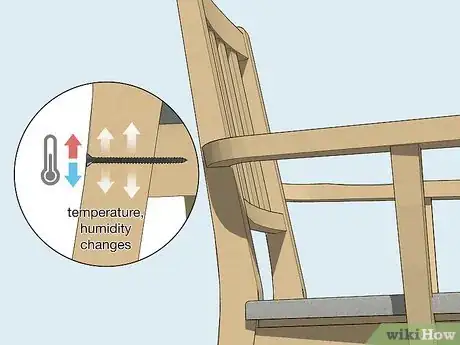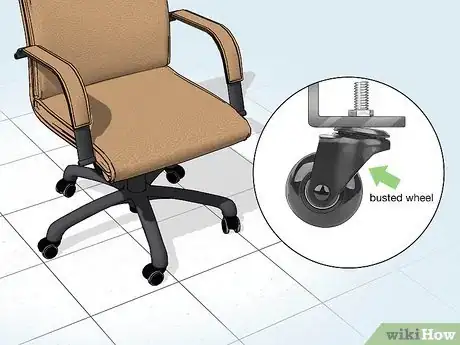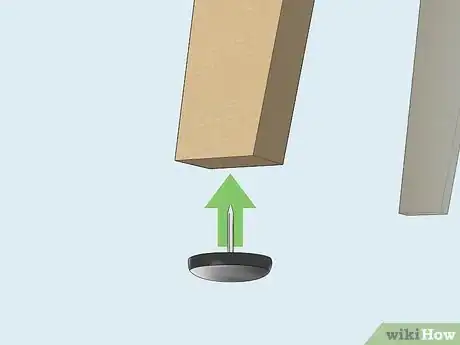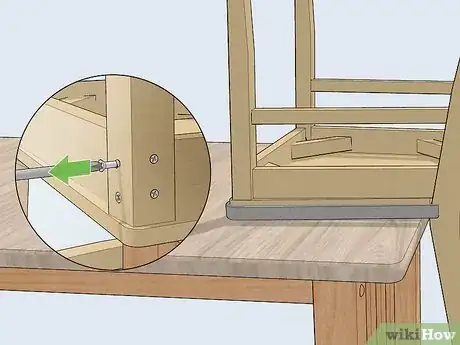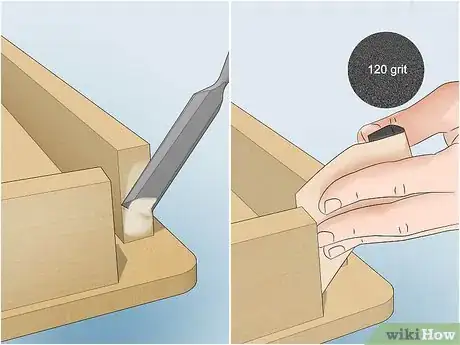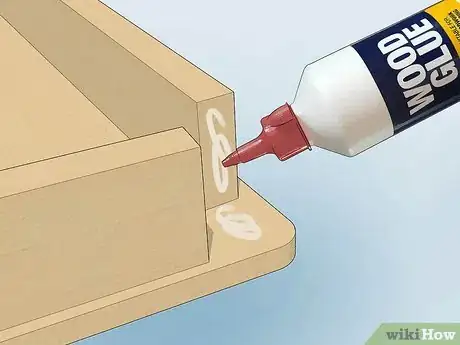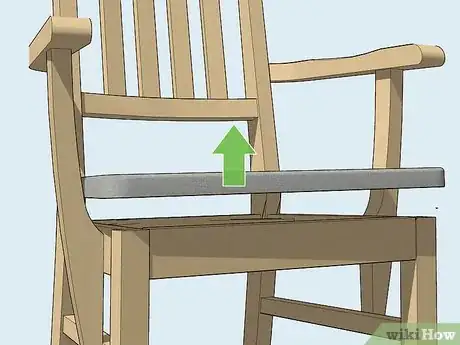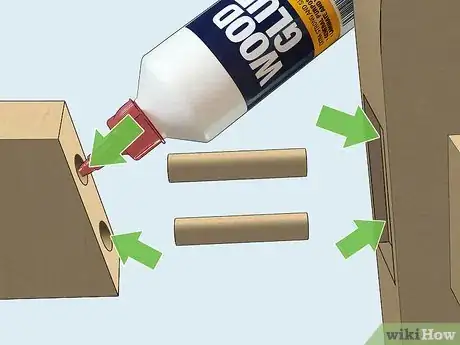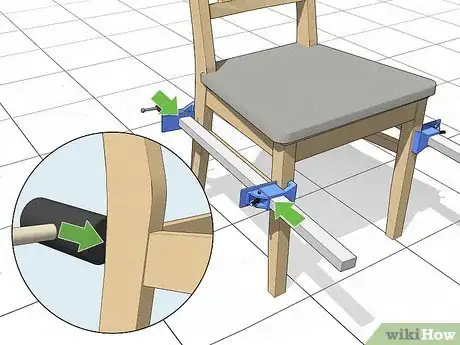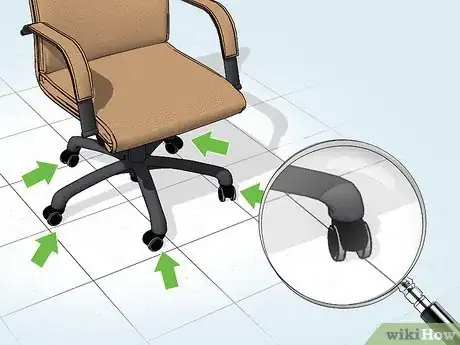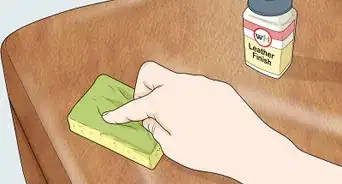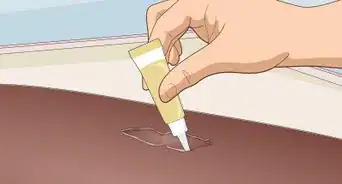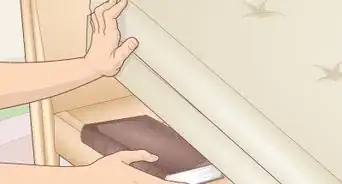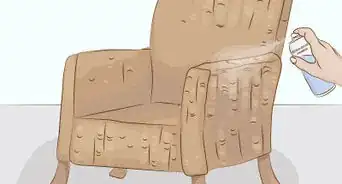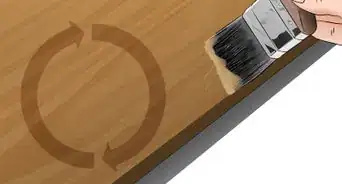This article was co-authored by Jeff Huynh and by wikiHow staff writer, Janice Tieperman. Jeff Huynh is the owner of Moseybolt, a full service solution in home services, renovations, and repair in the Greater Seattle area. He has over five years of handyman experience. He has a BS in Business Administration from the San Francisco State University and his Certificate in Industrial Electronics Technology from North Seattle College.
There are 17 references cited in this article, which can be found at the bottom of the page.
This article has been viewed 25,384 times.
Few things are more annoying than a pesky, wobbling chair. If you’re not ready to toss your seat in the dumpster just yet, you’re in good hands. We’ve answered all your frequently-asked questions, so you can get the most out of your furniture.
Steps
Why are my chairs wobbly?
-
1One of the legs might be a little shorter than the others. On some wobbly chairs, 3 legs are actually longer than 1 of the others, which causes your chair to rock back and forth.[1]
-
2Your chair joints could be overworked. Unlike other pieces of furniture, chairs are designed to hold a lot of weight. After weeks, months, and years of being used, your chair’s joints might be looking a little worse for wear.[2]Advertisement
-
3Temperature, humidity, and longevity can play a part. As temperature and humidity change around your home, your wooden chair starts to expand and screws may loosen. Plus, wood glue tends to wear down over time, which causes problems.[3]
-
4Parts might be broken or missing. On swivel-style seats, like office or gaming chairs, there might be an issue with the seat’s hardware, like a busted wheel, missing screw, or damaged seat plate.[4]
How else can you fix a wobbly wooden chair?
-
1Flip your chair upside-down and remove any screws holding the legs in place. Then, pull out the chair legs from the joints and set them aside.[7]
- This is a good fix if your chair’s joints are loose.
- For reference, label the chair legs and bottom with masking tape, so you remember which chair legs go where.[8]
-
2Chisel away any old glue and sand down the open joints. Inspect the 4 circular, open wood joints along the bottom of your chair seat. Grab a chisel and work away any dried pieces of glue from these joints. Then, sand away any old glue residue with a small piece of 120-grit sandpaper. Lightly sand the exposed ends of your chair legs as well, so there isn’t any leftover paint or glue stuck to them.[9]
-
3Apply glue along the open joints and chair legs. Squeeze a dot of wood glue along the inside of the open wood joint. Spread this paint over the sides of the joint with a small, thin paintbrush. Then, paint a thin layer of wood glue around the exposed ends of the chair legs.[10]
-
4Reinstall the chair legs and weigh down the seat. Center the chair legs over the open joints on the chair seat. Then, grab a rubber mallet and hammer each leg into its respective joint several times.[11] Flip your chair back to an upright position and place a heavy item on top of the seat, so the glue dries properly. Leave this weight on your chair until the wood glue is completely dried and cured.[12]
- You could use a heavy toolbox as a weight.
How do you fix a wobbly upholstered chair?
-
1Remove any screws and separate the upholstery cushion. Place your chair on its side and use an electric drill to remove any screws connected to the upholstery. Then, push and remove the cushion off the top of the seat.[13]
- These screws might be along the bottom sides or corners of the seat.
- Temperature and humidity might make your upholstered chair wobbly over time.[14]
-
2Loosen the back 2 legs with a rubber mallet. Tap along the inside of each back leg, so the chair leg starts to pull apart from the central seat. At this point, you should see 2 wooden dowels connecting the central seat to each back chair leg.[15]
- If you don’t have a rubber mallet, tie a thin, soft piece of wood to the side of your back chair legs. Then, tap along the wood with a traditional hammer.
-
3Apply wood glue to the dowels with a glue dispenser. A glue dispenser looks like a big syringe and helps you squeeze glue into hard-to-reach spots. Apply the glue all around these dowels, if you can.[16]
- You can buy a glue dispenser online, or from specialty stores.
-
4Hammer the legs back in place and clamp the chair. Tap the mallet a few times along the outside of each chair leg so the dowels are forced back into place.[17] Then, arrange a clamp vertically over the frame of the seat and tighten it. Leave this clamp on the chair for 30 minutes before taking it off. Let your chair dry and cure for several days before reinstalling the screws and upholstery.[18]
- When you start tapping the chair legs, excess wood glue may start dripping. If that happens, wipe off the glue as soon as possible with a damp cloth.
How do you fix a wobbly swivel chair?
-
1Inspect the wheels for damage. Flip your desk chair over and take a close look at each wheel. If any of the wheels look bent or damaged, unscrew them or pull them off by hand. Then, order a replacement from the manufacturer.[19]
- If your office chair is leaning to one side, you can still fix it at home.
-
2Check the chair legs for any missing screws. If your chair just started wobbling, there’s a chance that a screw popped out and landed on the floor nearby. If you can’t find the missing screw, buy a replacement screw from your local hardware store.[20]
- When you head to the store, remove an extra screw from your chair to use as a reference. Then, reinstall both screws after purchasing a replacement.
-
3Tighten the seat plate. Along the bottom of the actual seat, look for a metal plate—this should be attached to the chair with bolts and screws, and also be connected to the hydraulic lift and adjustment lever. Tighten any loose screws or bolts as you notice them, and replace any missing parts.[21]
- If the plate looks damaged or defective, order a new one from the chair manufacturer using your chair’s make and model number.
References
- ↑ https://m.youtube.com/watch?v=D6bcKHtX5-w&t=0m29s
- ↑ https://www.popularmechanics.com/home/interior-projects/how-to/a7307/how-to-fix-those-pesky-wobbly-chairs/
- ↑ https://m.youtube.com/watch?v=_3JGqULJLKg&t=1m43s
- ↑ https://www.manutan.co.uk/blog/office-chairs/how-to-fix-a-wobbly-office-chair/
- ↑ https://m.youtube.com/watch?v=D6bcKHtX5-w&t=1m0s
- ↑ Jeff Huynh. Professional Handyman. Expert Interview. 30 April 2019.
- ↑ https://m.youtube.com/watch?v=dKqIVWTpIiA&t=1m44s
- ↑ https://m.youtube.com/watch?v=dKqIVWTpIiA&t=2m20s
- ↑ https://m.youtube.com/watch?v=dKqIVWTpIiA&t=3m20s
- ↑ https://m.youtube.com/watch?v=dKqIVWTpIiA&t=4m54s
- ↑ https://m.youtube.com/watch?v=dKqIVWTpIiA&t=6m45s
- ↑ https://m.youtube.com/watch?v=dKqIVWTpIiA&t=7m27s
- ↑ https://m.youtube.com/watch?v=_3JGqULJLKg&t=3m29s
- ↑ https://m.youtube.com/watch?v=_3JGqULJLKg&t=1m43s
- ↑ https://m.youtube.com/watch?v=_3JGqULJLKg&t=4m51s
- ↑ https://m.youtube.com/watch?v=_3JGqULJLKg&t=5m12s
- ↑ https://m.youtube.com/watch?v=_3JGqULJLKg&t=6m2s
- ↑ https://m.youtube.com/watch?v=_3JGqULJLKg&t=8m44s
- ↑ https://www.manutan.co.uk/blog/office-chairs/how-to-fix-a-wobbly-office-chair/
- ↑ https://www.manutan.co.uk/blog/office-chairs/how-to-fix-a-wobbly-office-chair/
- ↑ https://www.manutan.co.uk/blog/office-chairs/how-to-fix-a-wobbly-office-chair/

